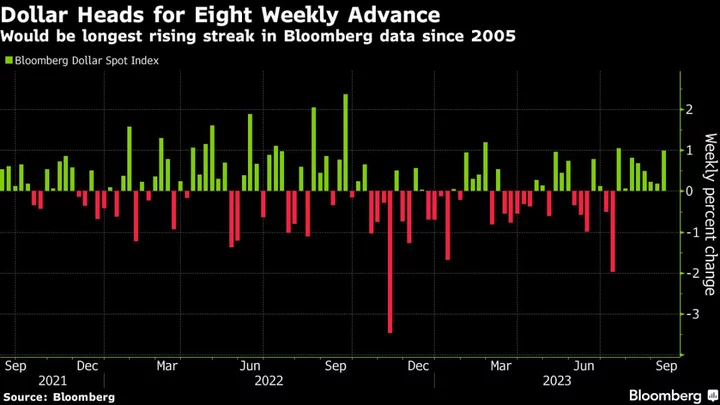
Asia Stocks to Follow Wall Street’s Apple-Led Drop: Markets Wrap
Stocks in Asia were set to follow a big tech-led drop on Wall Street amid concern over how
2023-09-08 08:15
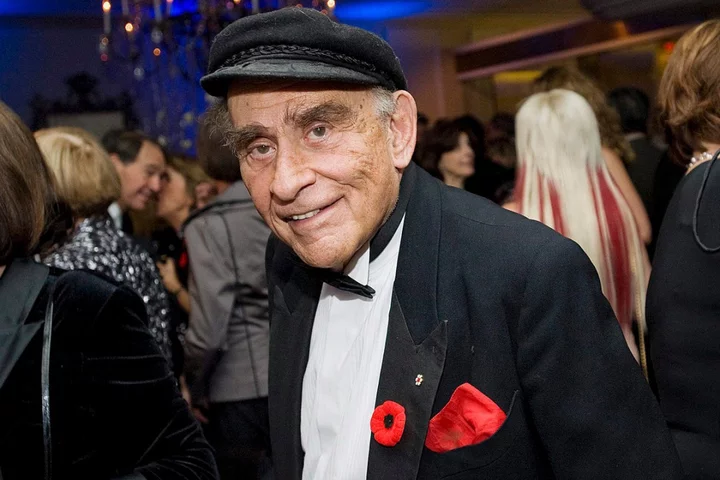
Canadian journalist and author Peter C. Newman dies at 94
Veteran Canadian journalist and author Peter C. Newman, who held a mirror up to Canada, has died. He was 94. Newman died in hospital in Belleville, Ontario, Thursday morning from complications related to a stroke he had last year and which caused him to develop Parkinson’s disease, his wife Alvy Newman said by phone. In his decades-long career, Newman served as editor-in-chief of the Toronto Star and Maclean’s magazine covering both Canadian politics and business. “It’s such a loss. It’s like a library burned down if you lose someone with that knowledge,” Alvy Newman said. “He revolutionized journalism, business, politics, history.” Often recognized by his trademark sailor’s cap, Newman also wrote two dozen books and earned the informal title of Canada’s “most cussed and discussed commentator,” said HarperCollins, one of his publishers, in an author's note. Political columnist Paul Wells, who for years was a senior writer at Maclean’s, said Newman built the publication into what it was at its peak, “an urgent, weekly news magazine with a global ambit. But more than that, Wells said, Newman created a template for Canadian political authors. "The Canadian Establishment’ books persuaded everyone — his colleagues, the book-buying public — that Canadian stories could be as important, as interesting, as riveting as stories from anywhere else,” he said. “And he sold truckloads of those books. My God.” That series of three books — the first of which was published in 1975, the last in 1998 — chronicled Canada’s recent history through the stories of its unelected power players. Newman also told his own story in his 2004 autobiography, “Here Be Dragons: Telling Tales of People, Passion and Power.” He was born in Vienna in 1929 and came to Canada in 1940 as a Jewish refugee. In his biography, Newman describes being shot at by Nazis as he waited on the beach at Biarritz, France, for the ship that would take him to freedom. “Nothing compares with being a refugee; you are robbed of context and you flail about, searching for self-definition,” he wrote. “When I ultimately arrived in Canada, what I wanted was to gain a voice. To be heard. That longing has never left me.” That, he said, is why he became a writer. The Writers’ Trust of Canada said Newman’s 1963 book “Renegade in Power: The Diefenbaker Years” about former Prime Minister John Diefenbaker had “revolutionized Canadian political reporting with its controversial ‘insiders-tell-all’ approach.” Newman was appointed to the Order of Canada in 1978 and promoted to the rank of companion in 1990, recognized as a “chronicler of our past and interpreter of our present.” Newman won some of Canada’s most illustrious literary awards, along with seven honorary doctorates, according to his HarperCollins profile. Read More Ukraine war’s heaviest fight rages in east - follow live Charity boss speaks out over ‘traumatic’ encounter with royal aide Chicago to move migrants from police stations to tent camps before winter under mayor's plan Teens killed in car by deputy in upstate New York were 15 and 17, police say Texas AG Ken Paxton's impeachment trial defense includes claims of a Republican plot to remove him
2023-09-08 06:51

Elon Musk thwarted Ukrainian drone attack on Russian ships, book claims
Elon Musk ordered SpaceX engineers to cut off Ukrainian access to Starlink satellites near the Crimean coast to prevent a surprise drone attack on Russian warships, a new biography claims. The drones packed with explosives “lost connectivity and washed ashore harmlessly” during the thwarted attack some time last year, Walter Isaacson writes in his upcoming book Elon Musk, according to an excerpt obtained by CNN. Mr Musk told the author that he feared a strike on occupied Crimea would amount to a “mini-Pearl Harbour” and lead to a Russian nuclear retaliation, Mr Isaacson writes. The decision led Ukrainian officials to beg the world’s richest person to reinstate the satellites. The account highlights how Mr Musk unwittingly found himself thrust into the frontlines of the the 18-month-old conflict. “How am I in this war?” Mr Musk reportedly asked the writer, who has previously published biographies of Steve Jobs and Henry Kissinger. “Starlink was not meant to be involved in wars. It was so people can watch Netflix and chill and get online for school and do good peaceful things, not drone strikes.” The world’s richest man found himself thrust into the world of high-stakes diplomacy, and reportedly spoke to US national security adviser Jake Sullivan, joint chiefs chairman Mark Milley and the Russian ambassador to the US. Ukraine’s former deputy prime minister Mykhailo Fedorov also contacted Mr Musk to beg him to switch the satellites back on, according to the book. The SpaceX CEO replied that the drone attack was “going too far and inviting strategic defeat,” and declined to restore access. SpaceX has donated more than 20,000 Starlink terminals to Ukraine after Russia destroyed much of the country’s infrastructure in the beginning of the war in February 2022. Last October, Mr Musk wrote to the Pentagon to say that it could no longer afford to continue funding the service, which he estimated had cost the company hundreds of millions of dollars, CNN revealed at the time. After the story broke, Mr Musk wrote on Twitter, now known as X: “The hell with it … we’ll just keep funding Ukraine govt for free.” According to Mr Isaacson, US Defense officials had been about to hand over a $145m check before his reversal. “Elon succumbed to the bulls*** on Twitter and to the haters at the Pentagon who leaked the story,” SpaceX’s president Gwynne Shotwell reportedly told Mr Isaacson. SpaceX did not immediately respond to a request for comment by The Independent. In a promotional blurb, publishers Simon & Schuster say that Mr Isaacson shadowed Mr Musk for two years to gain an insight into every aspect of the billionaire’s world. The author “attended his meetings, walked his factories with him, and spent hours interviewing him, his family, friends, coworkers, and adversaries”. “The result is the revealing inside story, filled with amazing tales of triumphs and turmoil, that addresses the question: are the demons that drive Musk also what it takes to drive innovation and progress?” * Elon Musk by Walter Isaacson is set to be realeased by Simon & Schuster on 12 September Read More First photo emerges of Elon Musk and his baby twins with Neuralink director How Ukraine’s month-long drone assault has brought the war home for Russians Elon Musk vows to sue ADL for calling him antisemitic after he promoted antisemitic campaign on X The Body in the Woods | An Independent TV Original Documentary The harrowing discovery at centre of The Independent’s new documentary
2023-09-08 02:25
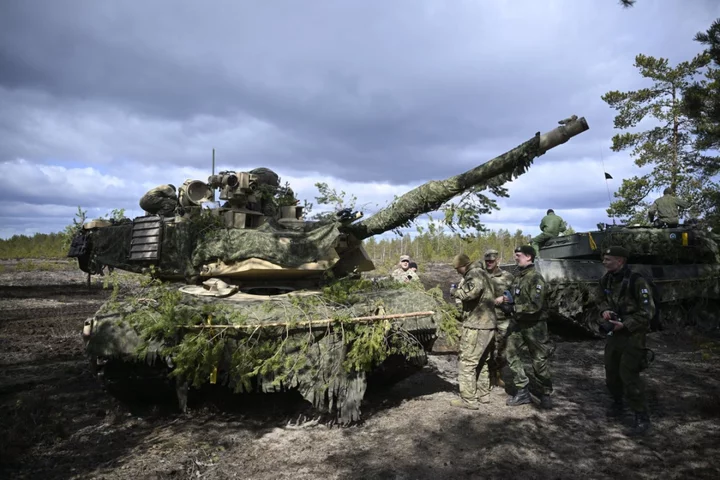
What are depleted uranium shells? The controversial armour-piercing muntions being used in Ukraine
The depleted uranium anti-tank rounds soon to be in Ukraine’s military stockpiles have kicked up a debate over its use in the continuing Russian invasion. Announced by the Pentagon in the latest military tranche on Wednesday, the controversial rounds have spread alarm among Vladimir Putin’s ministers who have warned against the escalation yet again. Britain has already promised armour-piercing rounds containing depleted uranium to Ukraine in March. Prime minister Rishi Sunak had backed drawing out the rounds from the UK military’s stockpiles ultimately “to degrade and deter – primarily – Russian aggression”. But what are these depleted uranium munitions? The 120mm anti-tank shells made of depleted uranium are self-sharpening and flammable penetrator in munitions. They are made of naturally occurring Uranium which has been stripped of mostly – not all – of its radioactive matter. So while it is not a nuclear weapon in itself, it acts as a fuel and also as a great explosive that can be used in tank armour, pressed between sheets of steel armour plate. They can be paired with top-tier tanks Western nations have already provided to Ukraine, and are particularly expected to boost the performance of 31 M1A1 Abram tanks set to be sent to the war-hit nation this fall. These rounds first emerged in the 1970s when the US army started making the armour-piercing rounds and has since used it along with tank armour to multiply the firing effect. Incredibly dense, more than lead, depleted uranium is considered a top-tier choice for projectiles. When fired, it becomes “essentially an exotic metal dart fired at an extraordinarily high speed”, RAND senior defence analyst Scott Boston said. “It’s so dense and it’s got so much momentum that it just keeps going through the armour – and it heats it up so much that it catches on fire,” Edward Geist, a nuclear expert at research organisation RAND said. The depleted uranium has also been added to the US ammunition fired by the Air Force’s A-10 close air support attack plane, known as the tank killer. Depleted uranium munitions, as well as depleted uranium-enhanced armour, have been previously used by US tanks in the 1991 Gulf War against Iraq’s T-72 tanks and again in the invasion of Iraq in 2003, as well as in Serbia and in Kosovo. Is the risk alarming? The UN nuclear watchdog has warned of the emissions of low levels of radiation from depleted uranium when handling and also warned of possible dangers of explosion. This is a bug, not a feature of the munition, says Mr Geist. Categorically, depleted uranium is not marked as a nuclear weapon. It is mainly a toxic chemical, as opposed to a radiation hazard. Particles in aerosols can be inhaled or ingested, and while most would be excreted again, some can enter the bloodstream and cause kidney damage. “High concentrations in the kidney can cause damage and, in extreme cases, renal failure,” the International Atomic Energy Agency has said. The US troops have questioned whether some of the ailments they now face were caused by inhaling or being exposed to fragments after a munition was fired or their tanks were struck, damaging uranium-enhanced armour. Experts have said that if the US military could find another material with the same density but without the radioactivity, it would likely switch. The IAEA has warned that handling of depleted uranium “should be kept to a minimum and protective apparel (gloves) should be worn” and “a public information campaign may, therefore, be required to ensure that people avoid handling the projectiles”. Initial signs of radioactivity from the Ukraine war have started trickling in. Russian foreign ministry spokesperson Maria Zakharova had recently claimed that the use of these munitions has already led to radioactive contamination. How has Russia reacted? In March, Russia was fuming after the Rishi Sunak administration announced it will give depleted uranium rounds to Ukraine, prompting them to issue nuclear threats. This time, after the US joined Britain in sending the depleted uranium shells, Moscow snapped and called the latest military aid of depleted uranium a “criminal act” beyond just escalation. “It is a reflection of Washington’s outrageous disregard for the environmental consequences of using this kind of ammunition in a combat zone. This is, in fact, a criminal act, I cannot give any other assessment,” Russian deputy foreign minister Sergei Ryabkov said. He also reiterated previous warnings by Russia about the risk of a nuclear war, because of what he called Western “pressure” on Moscow. “Now this pressure is dangerously balancing on the brink of direct armed conflict between nuclear powers,” he said. In March, Vladimir Putin had warned that Moscow would "respond accordingly, given that the collective West is starting to use weapons with a ‘nuclear component.’” Several days later, Putin said Russia’s response will see Moscow stationing tactical nuclear weapons in neighbouring Belarus, action to which effect was announced in July as Putin and the Belarusian president said they had already shipped some of the weapons. Read More The Body in the Woods | An Independent TV Original Documentary The harrowing discovery at centre of The Independent’s new documentary US sends Ukraine controversial depleted uranium weapons that can pierce tank armour UN nuclear watchdog report seen by AP says Iran slows its enrichment of near-weapons-grade uranium Kyiv drones explode near Moscow and military HQ as Russia on defensive – live
2023-09-07 22:52
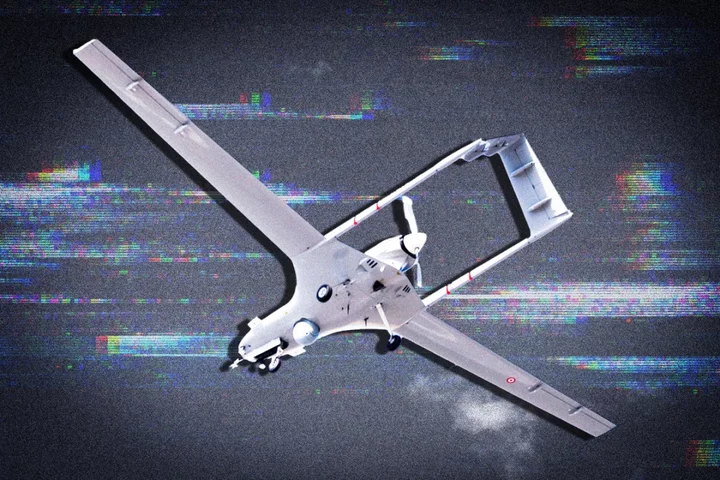
Ukraine drone strike map reveals key places where Kyiv is taking the war to Russia
As drone strikes continue to rain down on Russian soil, Vladimir Putin’s bloody war has reached his own doorstep. The strikes are now daily and on Tuesday the Russian defence ministry said its air defence systems destroyed two drones over the Kaluga and Tver regions, which border the Moscow region, as well as one closer to the capital, over the Istra district. Moscow Mayor Sergei Sobyanin said that the drones “were trying to carry out an attack on Moscow“ and that a consumer services facility was damaged in the Istra district, which is located some 65 km (40 miles) northwest of the Kremlin. Attacks on Russia have increased sharply, with the largest such strikes hitting six regions on one night last week. That assault included two Russian military transport planes being destroyed – and two more damaged – at an airbase in the city of Pskov. Ukraine’s military intelligence chief, Kyrylo Budanov, said that the drones were launched from inside Russia. However, in speaking to the War Zone website, Mr Budanov did not say whether the attack – about 400 miles (700km) from the Ukraine border – was carried out by Ukrainian or Russian operatives. “We are working from the territory of Russia,” he said. Officials confirmed attacks on six targets in the Pskov, Bryansk, Kaluga, Orlov, Ryazan and Moscow regions. Meanwhile, Moscow has continued to carry out drone attacks on Ukrainian targets including port infrastructure. On Monday, 32 Russian kamikaze drones struck the Ukrainian port city of Odesa, damaging civilian and industrial buildings. The assault on the military airfield in Pskov that damaged aircraft has been deemed the most significant attack, situated more than 600km (400 miles) from Ukraine, it was where a number of elite paratroopers are stationed. The state-run Tass news agency reported at least four giant Il-76 transport planes were damaged in the four-hour wave of drones, two of which had “burst into flames”. Moscow retaliated on Wednesday by launching a “massive combined attack” on the Ukrainian capital using drones and missiles, that killed two people and injured another. Kyiv officials normally neither claim nor deny responsibility for attacks on Russian soil, though they sometimes refer obliquely to them. The apparent Ukrainian drones reaching deep into Russia and cross-border sabotage missions are part of Kyiv’s efforts to heap domestic pressure on the Kremlin, militarily and politically. Meantime, a Ukrainian counteroffensive launched in June is chipping away at some parts of the front line, Kyiv officials claim. Read More The Body in the Woods | An Independent TV Original Documentary The harrowing discovery at centre of The Independent’s new documentary Ukraine war – live: Putin accused of trafficking Cubans to fight for Russia in his invasion The three reasons Putin will be terrified of Ukraine’s counteroffensive win Kim Jong-un to hold weapons talks with Putin after ‘travelling to Russia in armoured train’
2023-09-07 21:27

Nato boss give verdict on Ukraine’s chances of breakthrough by winter
Ukraine’s offensive against Russian forces is making slow progress, and there may not be a major breakthrough of Russian lines in the next two months as had previously been envisaged, according to Western officials. However, “focusing on such tactical issues” is counterproductive and there is a need to look at the bigger picture, the officials said, adding that this shows that Vladimir Putin is losing the war, as Ukraine has retaken a sizeable amount of territory overall since Russia’s invasion began. Nato’s secretary general Jens Stoltenberg confirmed that Ukraine is making progress in its efforts to regain territory that began in June, contradicting Mr Putin’s claims this week that the counteroffensive “has failed, not stalled”. “The Ukrainians are gradually gaining ground... They have been able to breach the defensive lines of the Russian forces, and they are moving forward,” Mr Stoltenberg said in an update to MEPs at the European Parliament on Thursday. “The Ukrainian offensive is slower than we anticipated a couple of months ago,” one Western official said. “That is an acknowledgement of Russian defences. And it’s also an acknowledgement of how Ukraine is having to pull together a force that is a mixed fleet of both old equipment and donated equipment ... and a civilian population that has been thrown to the fore and doing some of the toughest things in land warfare, which is getting through a minefield.” Mines form a layer of Russia’s defences. “Russia has lost either killed or wounded over 270,000 people and [destroyed] over a couple of thousand tanks, and if you add that to armoured fighting vehicles [then it is] over 4,000 fighting vehicles,” the official added. “There has been an enormous drain on Russia, and particularly its army and its combat effectiveness,” the official said. “And then in the broadest base, you’re seeing Russia under economic pressure and under diplomatic pressure.” Armour supplied by the West, including German Leopard tanks, has been damaged or destroyed in the prolonged battles continuing in the east and south across the last three months. The first of 14 Challenger II tanks provided by Britain was put out of action near Zaporizhzhia this week. According to defence sources, it was immobilised by a mine and then targeted by a Russian Lancet loitering drone. There are no plans, sources say, to replace it at present from within the 145 Challenger IIs currently available for deployment. The Western officials said that arms supplies to Kyiv will continue, and denied that “war fatigue” will begin to spread unless Volodymyr Zelensky’s government can show significant success in the near future. That is something that has been suggested by a number of European politicians. It has also been argued that the Kremlin is banking on American support for Ukraine starting to fray as the US presidential campaign gets under way next year. The possibility of Donald Trump – who was accused of being the “Muscovian candidate” when he was previously in the White House – winning the election greatly adds to this concern. “Russia thinks time is on its side; we think time is on our side,” another official said. “It has been put that if you’re Putin, you’re gambling that Donald Trump wins the next [US] election. But that is quite a long way away.” Read More The Body in the Woods | An Independent TV Original Documentary The harrowing discovery at centre of The Independent’s new documentary
2023-09-07 21:21
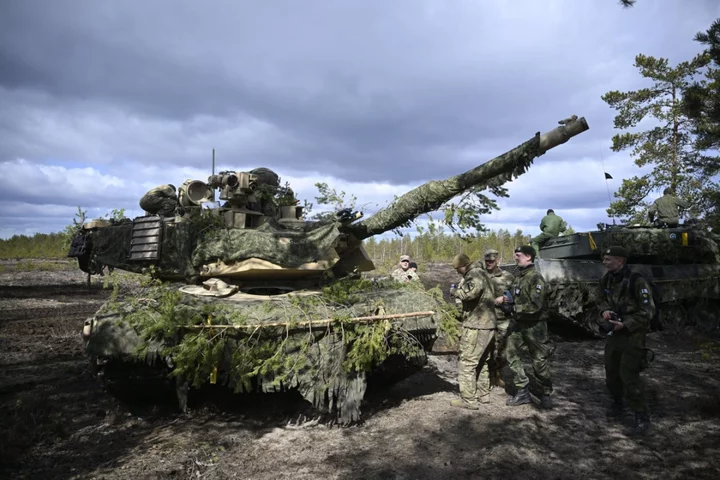
What are depleted uranium munitions being used in Ukraine and why are they controversial?
The depleted uranium anti-tank rounds soon to be in Ukraine’s military stockpiles have kicked up a debate over its use in the continuing Russian invasion. Announced by the Pentagon in the latest military tranche on Wednesday, the controversial rounds have spread alarm among Vladimir Putin’s ministers who have warned against the escalation yet again. Britain has already promised armour-piercing rounds containing depleted uranium to Ukraine in March. Prime minister Rishi Sunak had backed drawing out the rounds from the UK military’s stockpiles ultimately “to degrade and deter – primarily – Russian aggression”. But what are these depleted uranium munitions? The 120mm anti-tank shells made of depleted uranium are self-sharpening and flammable penetrator in munitions. They are made of naturally occurring Uranium which has been stripped of mostly – not all – of its radioactive matter. So while it is not a nuclear weapon in itself, it acts as a fuel and also as a great explosive that can be used in tank armour, pressed between sheets of steel armour plate. They can be paired with top-tier tanks Western nations have already provided to Ukraine, and are particularly expected to boost the performance of 31 M1A1 Abram tanks set to be sent to the war-hit nation this fall. These rounds first emerged in the 1970s when the US army started making the armour-piercing rounds and has since used it along with tank armour to multiply the firing effect. Incredibly dense, more than lead, depleted uranium is considered a top-tier choice for projectiles. When fired, it becomes “essentially an exotic metal dart fired at an extraordinarily high speed”, RAND senior defence analyst Scott Boston said. “It’s so dense and it’s got so much momentum that it just keeps going through the armour – and it heats it up so much that it catches on fire,” Edward Geist, a nuclear expert at research organisation RAND said. The depleted uranium has also been added to the US ammunition fired by the Air Force’s A-10 close air support attack plane, known as the tank killer. Depleted uranium munitions, as well as depleted uranium-enhanced armour, have been previously used by US tanks in the 1991 Gulf War against Iraq’s T-72 tanks and again in the invasion of Iraq in 2003, as well as in Serbia and in Kosovo. Is the risk alarming? The UN nuclear watchdog has warned of the emissions of low levels of radiation from depleted uranium when handling and also warned of possible dangers of explosion. This is a bug, not a feature of the munition, says Mr Geist. Categorically, depleted uranium is not marked as a nuclear weapon. It is mainly a toxic chemical, as opposed to a radiation hazard. Particles in aerosols can be inhaled or ingested, and while most would be excreted again, some can enter the bloodstream and cause kidney damage. “High concentrations in the kidney can cause damage and, in extreme cases, renal failure,” the International Atomic Energy Agency has said. The US troops have questioned whether some of the ailments they now face were caused by inhaling or being exposed to fragments after a munition was fired or their tanks were struck, damaging uranium-enhanced armour. Experts have said that if the US military could find another material with the same density but without the radioactivity, it would likely switch. The IAEA has warned that handling of depleted uranium “should be kept to a minimum and protective apparel (gloves) should be worn” and “a public information campaign may, therefore, be required to ensure that people avoid handling the projectiles”. Initial signs of radioactivity from the Ukraine war have started trickling in. Russian foreign ministry spokesperson Maria Zakharova had recently claimed that the use of these munitions has already led to radioactive contamination. How has Russia reacted? In March, Russia was fuming after the Rishi Sunak administration announced it will give depleted uranium rounds to Ukraine, prompting them to issue nuclear threats. This time, after the US joined Britain in sending the depleted uranium shells, Moscow snapped and called the latest military aid of depleted uranium a “criminal act” beyond just escalation. “It is a reflection of Washington’s outrageous disregard for the environmental consequences of using this kind of ammunition in a combat zone. This is, in fact, a criminal act, I cannot give any other assessment,” Russian deputy foreign minister Sergei Ryabkov said. He also reiterated previous warnings by Russia about the risk of a nuclear war, because of what he called Western “pressure” on Moscow. “Now this pressure is dangerously balancing on the brink of direct armed conflict between nuclear powers,” he said. In March, Vladimir Putin had warned that Moscow would "respond accordingly, given that the collective West is starting to use weapons with a ‘nuclear component.’” Several days later, Putin said Russia’s response will see Moscow stationing tactical nuclear weapons in neighbouring Belarus, action to which effect was announced in July as Putin and the Belarusian president said they had already shipped some of the weapons. Read More The Body in the Woods | An Independent TV Original Documentary The harrowing discovery at centre of The Independent’s new documentary US sends Ukraine controversial depleted uranium weapons that can pierce tank armour UN nuclear watchdog report seen by AP says Iran slows its enrichment of near-weapons-grade uranium Ukraine Russia war: Izmail port under attack as Kyiv drones downed near Moscow
2023-09-07 18:16

French teenager dies after police car hits scooter near Paris
A 16-year-old boy lost his life after his scooter collided with a police vehicle near Paris. The teenager was taken to Beaujon Hospital in Clichy and was in a serious condition after the accident on Wednesday evening at Elancourt in Yvelines, local media reported. The boy, however, passed away in the evening. The teenager was not named by local media. At the time of the accident, another police car was trailing the teenager, authorities said. The scooter collided with the left side of one of the police vehicles. The Versailles prosecutor’s office confirmed that both police officers operating the vehicles involved were arrested on Wednesday evening. “My colleagues shot in the area, they saw him a second time, at that time he fled again. A little further he hit a second police vehicle on an intersection,” senior police official Tony Vallee was quoted as saying by BFMTV. Two separate investigations have been initiated, with law enforcement authorities saying the tragedy stemmed from the boy’s refusal to comply. An inquiry was initially launched for “involuntary injury”, but has been reclassified as a case of “manslaughter”, local media said. Additionally, a second investigation has been initiated for “refusal to comply” and assigned to the Yvelines departmental security. Several policemen were dispatched to Elancourt later during the day as a precautionary measure in case of potential incidents or disturbances. In late June, the death of 17-year-old Nahel Merzouk during a traffic stop in a Paris suburb ignited five days of riots and looting in the area. The shooting had occurred after the 17-year-old was gunned down in his car for failing to stop. He was then allegedly caught driving through a bus lane at rush hour. Nahel’s family claimed the officer “planned” the attack “in his head”. “They took my baby,” Nahel’s mother had said in a TikTok video. “He was still a child, he needed his mother. This morning he gave me a big kiss and told me he loved me. I told him be careful and I loved him.” Read More Britain’s Olympic success will be judged on athlete happiness – not just medals – at Paris 2024 King Charles set for royal first as state visit to France is rescheduled ‘Adventurous’ 93-year-old goes ‘out in style’ as ashes scattered by drone Cricket, breakdancing, 7 other sports still waiting for word on 2028 Los Angeles Olympic status BBC’s director of sport Barbara Slater to retire after 40 years at the broadcaster Interpol at 100: A mixed legacy of hunting fugitives and merging police data from 195 countries
2023-09-07 17:26
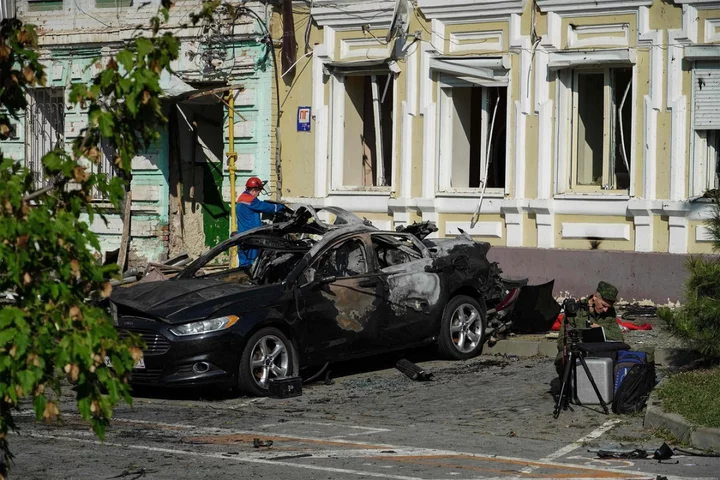
Ukraine-Russia war – live: Izmail port under attack as Kyiv drones downed near Moscow
Russia’s relentless attack on the port city of Izmail entered its fourth day as Ukrainian drones heading to three Russian cities, including Moscow, were shot down overnight. A Ukrainian drone targeted Moscow, but was shot down southeast of the city without causing any damage or injuries, mayor Sergei Sobyanin said. Two more drones were shot down over the southern region of Rostov, which borders Ukraine, as explosions rocked the centre, Rostov-on-Don. At least one person was injured as the attack damaged three buildings and several cars. Two other drones were shot down over the Bryansk region, which also borders Ukraine, governor Alexander Bogomaz reported. Drone debris damaged a railway station and several cars, he said. In recent weeks drones have repeatedly targeted Moscow, with some hitting buildings in the city center, while others being shot down on the outskirts of the city. In Russia’s attack on Izmail, located on the Danube river, at least one person was injured while infrastructure has been damaged, including grain silos. Read More From Challenger to Leopard: How Ukraine’s tanks compare to Russia’s A look at the uranium-based ammo the US is sending to Ukraine NATO member Romania says it has found drone pieces from Russian attacks in Ukraine on its territory Russian commander ‘used two military helicopters to transport his pet cat’
2023-09-07 17:21

UK rejoins EU science research scheme Horizon
UK-based scientists and institutions will have access to the £85bn fund from today.
2023-09-07 16:50
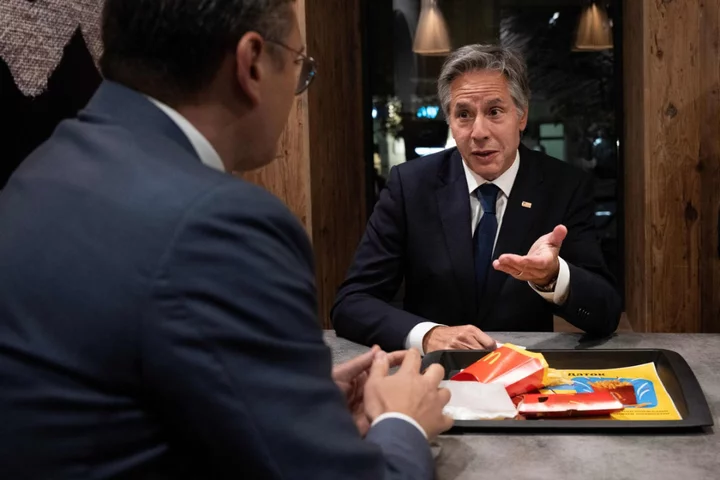
US sends Ukraine controversial depleted uranium weapons that can pierce tank armour
Ukraine will be armed with depleted uranium anti-tank rounds that can aid its troops in piercing Russian tanks, said the Pentagon. The controversial 120mm anti-tanks shells will be used to boost the performance of 31 M1A1 Abram tanks the US will give Ukraine in the fall. The US is looking to aid Kyiv in dismantling Russian lines in eastern, northeastern and southern regions amid a simmering counteroffensive by the Ukrainians. The rounds, developed by the US during the Cold War, have previously destroyed Soviet tanks, including the decades old T-72 tanks dispatched by Moscow in the continuing war. The 46th drawdown of military equipment from the Department of Defence includes additional air defence equipment, artillery rounds and anti-tank weapons, and was announced shortly after Secretary of State Antony Blinken met with his Ukrainian counterpart and foreign minister Dmytro Kuleba on Wednesday. “We want to make sure that Ukraine has what it needs not only to succeed in the counteroffensive but has what it needs for the long term to make sure that it has a strong deterrent, strong defence capacity so that, in the future, aggressions like this don’t happen again,” Mr Blinken said in a statement before the two leaders met. The UK had also announced in March that it would give depleted uranium rounds to Ukraine, leaving Russia fuming and falsely claiming they had provided nuclear components. On Thursday, Russia snapped at Washington and called the latest military aid of depleted uranium a “criminal act” beyond just escalation. “It is a reflection of Washington’s outrageous disregard for the environmental consequences of using this kind of ammunition in a combat zone. This is, in fact, a criminal act, I cannot give any other assessment,” said Russian deputy foreign minister Sergei Ryabkov. He also reiterated previous warnings by Russia about the risk of a nuclear war, because of what he called Western “pressure” on Moscow. “Now this pressure is dangerously balancing on the brink of direct armed conflict between nuclear powers,” he said. Russia has deployed hypersonic missiles to thermobaric weapons on civilian targets in its full-scale invasion of Ukraine which has continued for more than 20 months now. Officials in Moscow have never taken responsibility for explaining using ballistic Kinzhal missiles, a barrage of which was fired on Ukraine in March this year. The missile has a range of up to 2,000km (about 1,250 miles) and flies at 10 times the speed of sound, making it hard to intercept. In April this year, the British defence ministry said Russia is likely handing over thermobaric multiple launch rocket systems to its elite airborne forces, suggesting its use in the continuing war. Thermobaric weapons, fired using the multiple launch rocket systems, are considered to be some of the most brutal war weapons in existence. “The highly destructive TOS-1A, which Russia designates as a ‘heavy flamethrower’, is typically operated by Russia’s specialist Chemical, Biological and Radiological Protection Troops in Ukraine, and has not previously been formally associated with the VDV,” the ministry had said. Russia had admitted to using the flamethrower weapon in March last year. Also known as vacuum bombs, they suck in oxygen and generate a powerful explosion that can have a devastating impact on victims – especially in an enclosed space. In another attack, Russia used cluster bombs which killed a child and two adults hiding in a pre-school in northeastern Ukraine. While the depleted uranium rounds retain some radioactive properties, they can’t generate a nuclear reaction like a nuclear weapon would, RAND nuclear expert and policy researcher Edward Geist said. The Pentagon has defended the use of the munitions. The US military “has procured, stored, and used depleted uranium rounds for several decades, since these are a longstanding element of some conventional munitions,” Pentagon spokesman Marine Corps Lt Col Garron Garn said in a statement in March. Read More The Body in the Woods | An Independent TV Original Documentary The harrowing discovery at centre of The Independent’s new documentary UN nuclear watchdog report seen by AP says Iran slows its enrichment of near-weapons-grade uranium Ukraine war: US send depleted uranium to Kyiv after blast near Russia military base Greek shipper pleads guilty to smuggling Iranian crude oil and will pay $2.4 million fine
2023-09-07 16:17
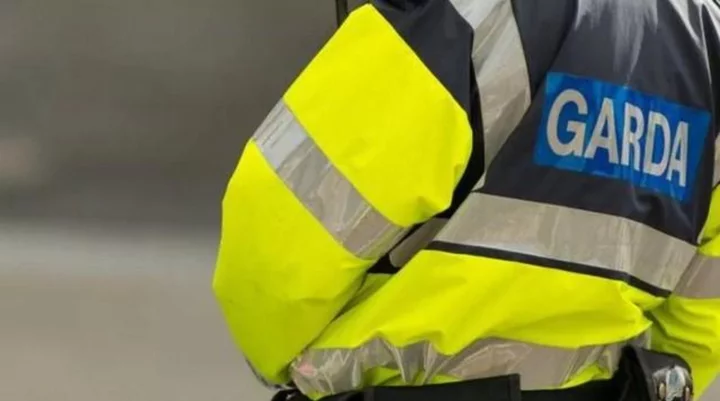
Three in hospital after car hits people outside pub
Two women and a man, aged in their 50s and 60s, have been taken to Letterkenny University Hospital.
2023-09-07 15:51
